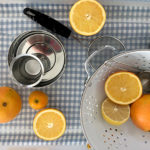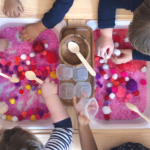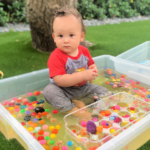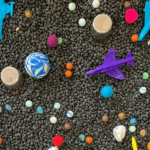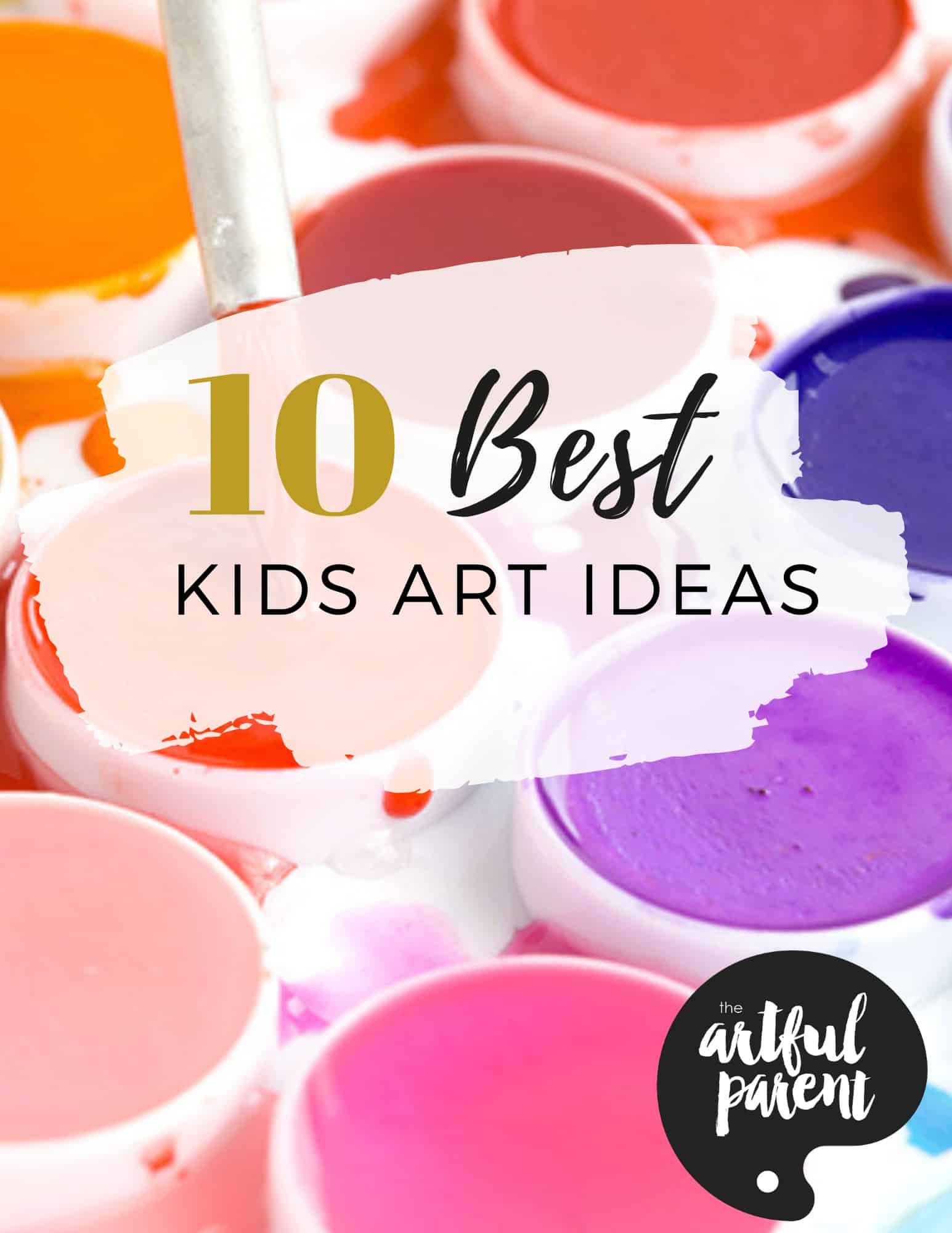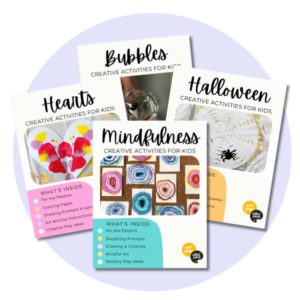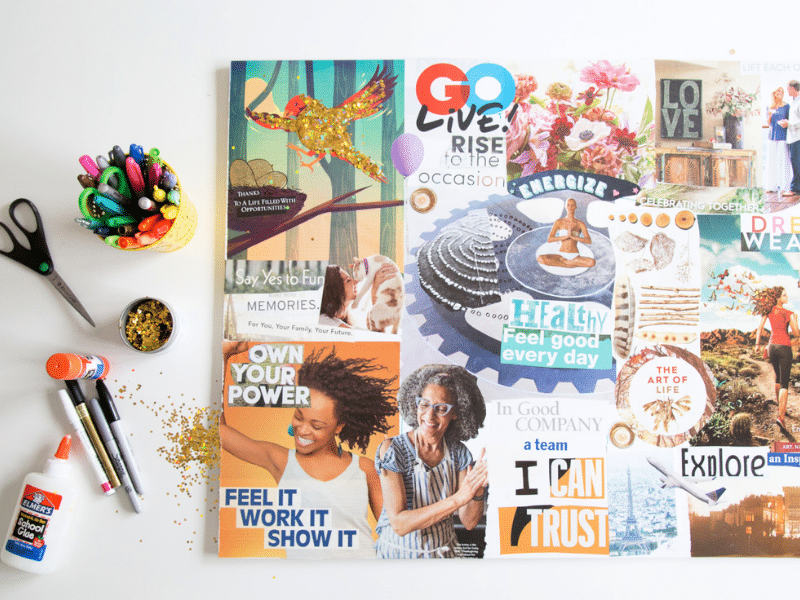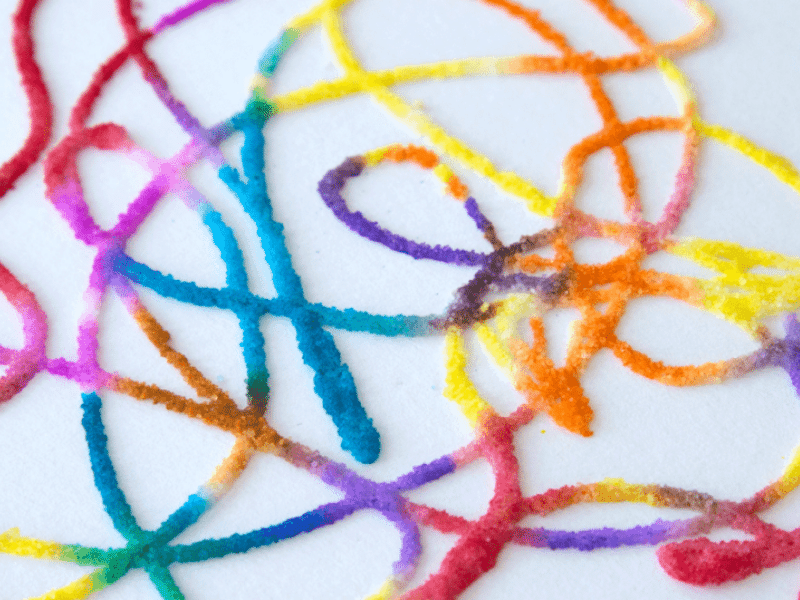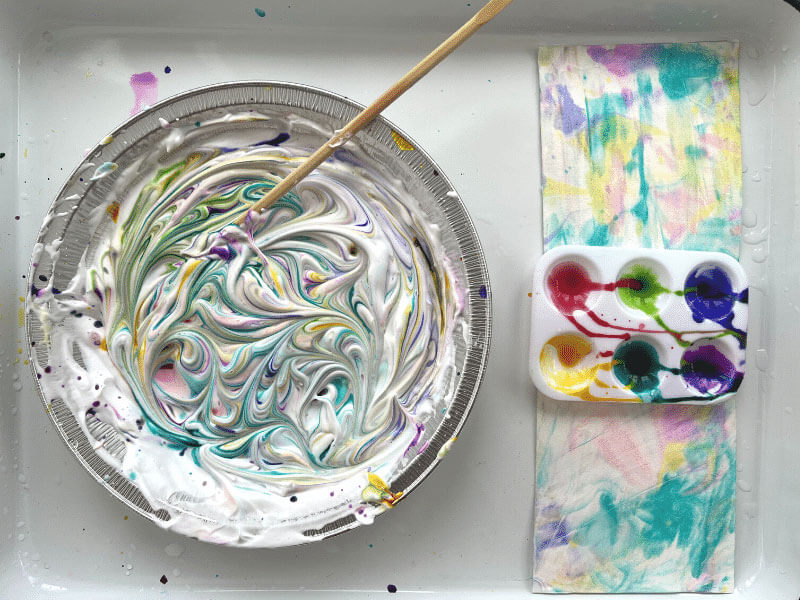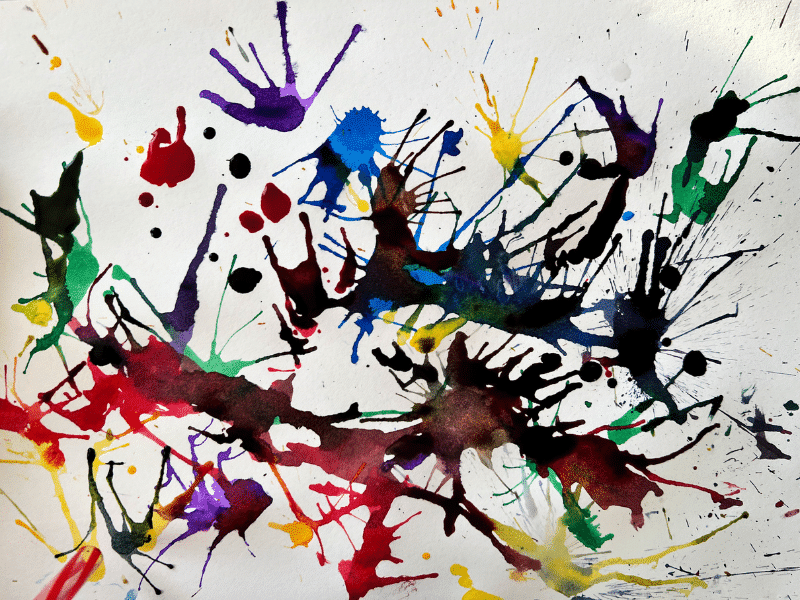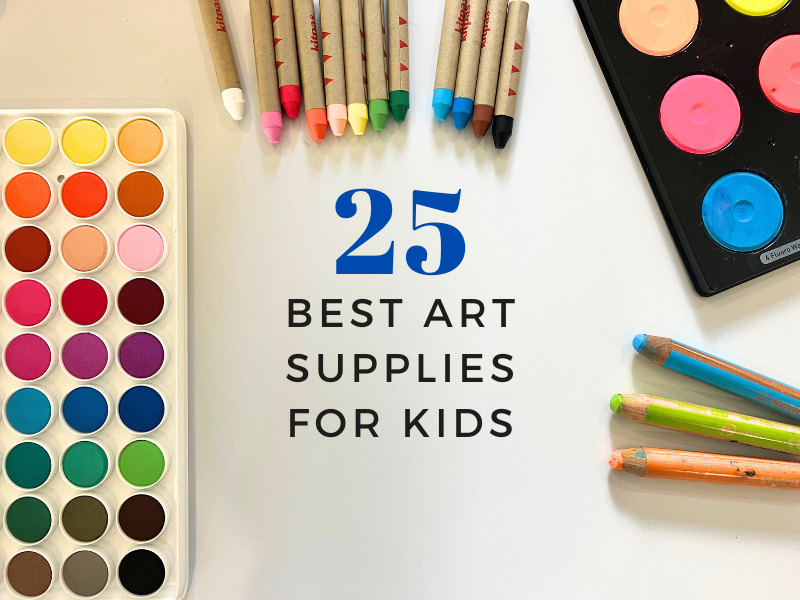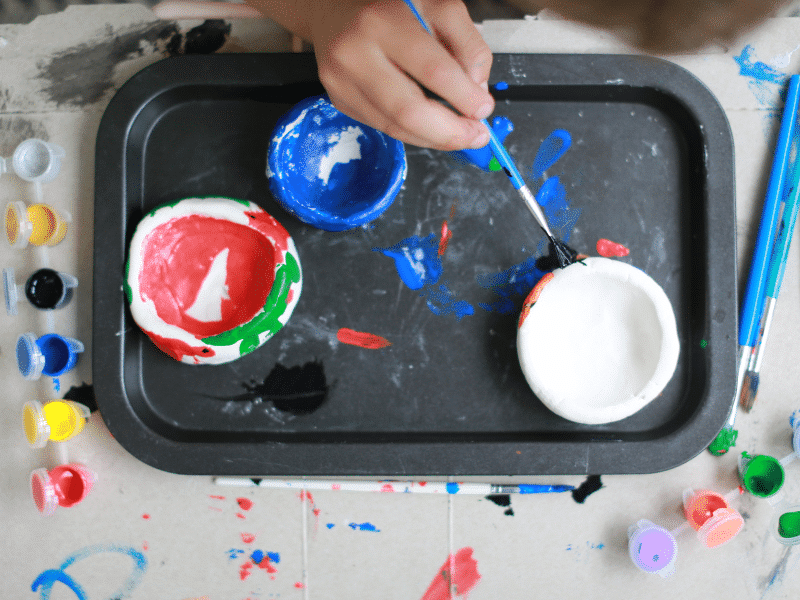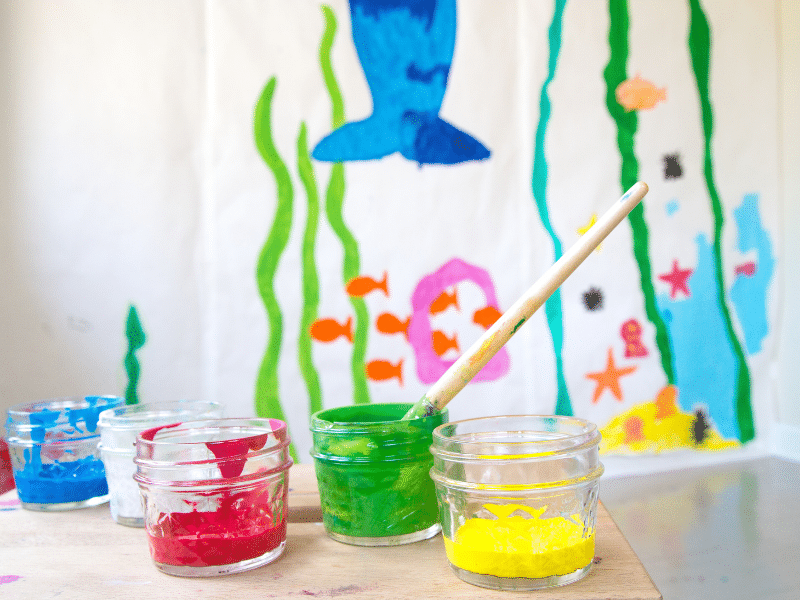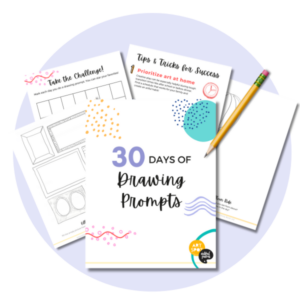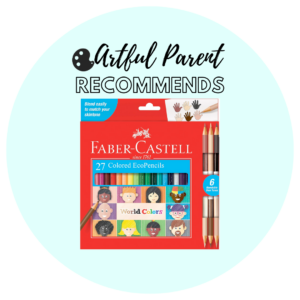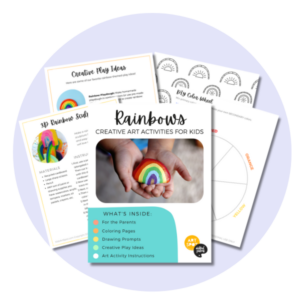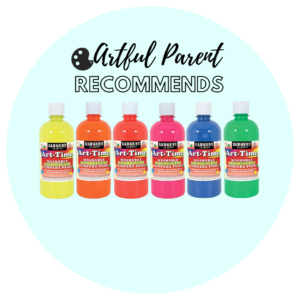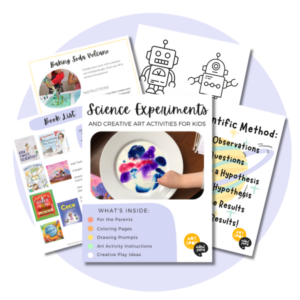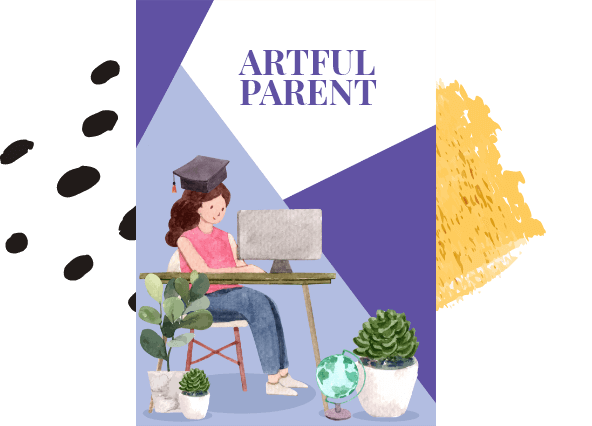Sensory play is great for children’s development and sensory bin materials can be used in learning, play, & art activities. The more senses we regularly use, the better.
Updated March 2024
We’ve always been big fans of sensory play and sensory bins.
Young children, especially, learn about the world with their whole bodies.
Sensory materials and experiences can be wonderfully engaging (and also calming and grounding, depending on how you use them).
Sensory play helps build both physical and mental abilities. It stimulates the five senses: sight, touch, smell, hearing, and taste. It can provide a sense of calm and comfort for a child and can help them learn to regulate their behavior, which can ultimately also improve focus.
Want to learn more? See The Artful Parent’s Guide to Sensory Play for more information on how to manage sensory play.
You provide children with the opportunity to learn, play and encourage creativity with sensory rich materials. Without further ado, here are some of our favorites.
The Best Sensory Bin Materials for Kids
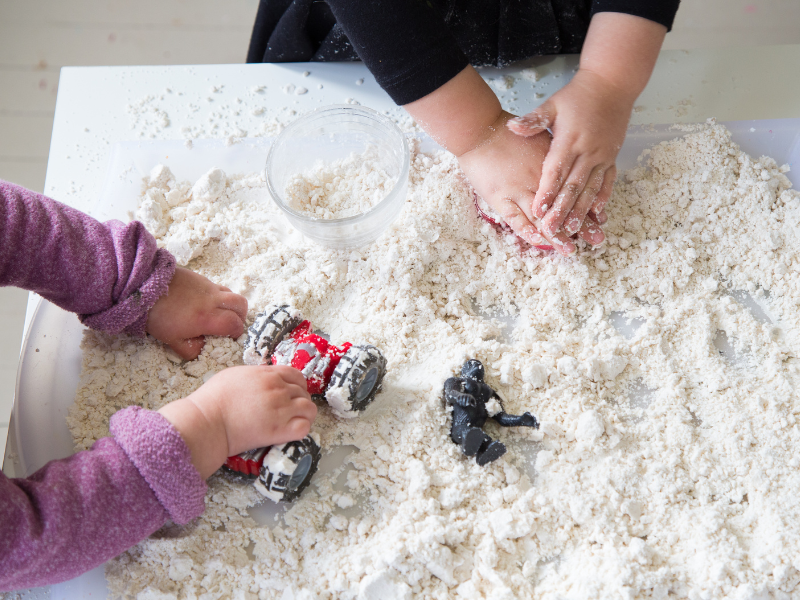
1. Cloud Dough
Recipe: 8 cups flour to 1 cup oil (baby oil or vegetable/canola oil). To color your cloud dough, mix oil based (candy) food coloring with oil first.
Watch our Youtube video on how to make cloud dough!
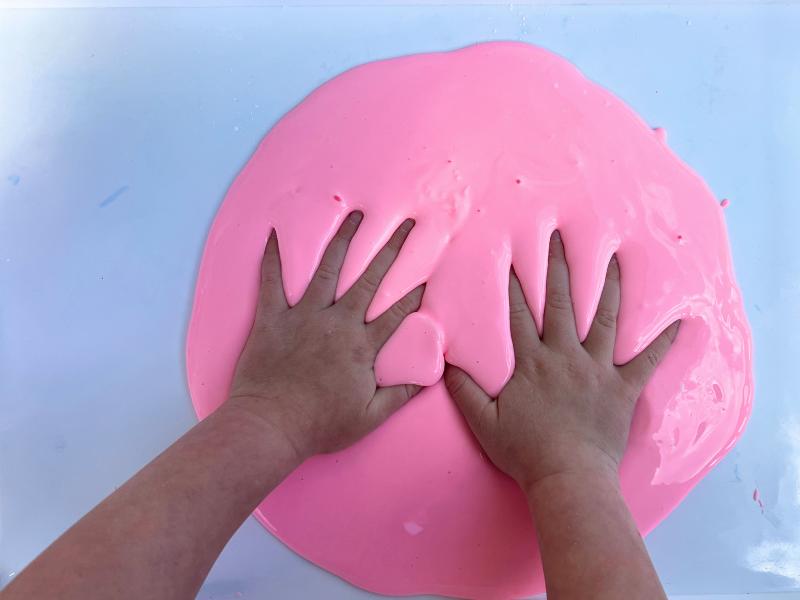
2. Oobleck
Oobleck, or sensory goop, is super easy to make. And there’s a surprising number of fun ways to learn while playing with this non-Newtonian liquid.
It looks messy, I know, but it’s simply cornstarch and water, making it easy to make and clean up.

3. Homemade Slime
Slime is also easy to make at home! Plus, it’s a great sensory material to hold, squeeze, stretch, and fiddle with. A super fun sensory material for big kids to mix up at home. And be sure to try out How to Make Slime Creations for Kids afterwards.
Here are a few of The Artful Parent’s favorite recipes:

4. Shaving cream / foam painting
Shaving cream is always a favorite sensory and art material for kids. It’s fun to paint toys with, rub all over your body, or paint the window!
Here are lots of idea for using shaving cream for kids’ art, play, and learning, including shaving cream marbling, sensory table ideas, holiday crafts, and parties.
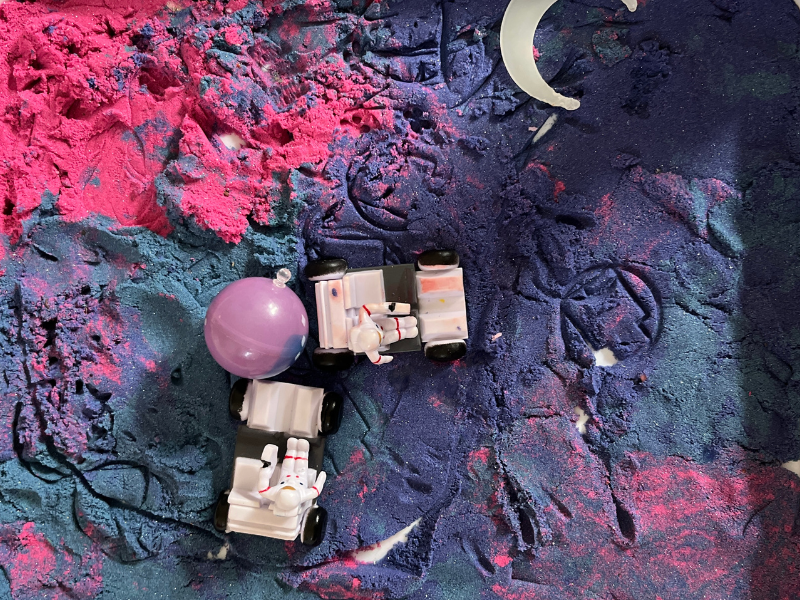

5. Kinetic sand
Kinetic sand is another favorite sensory material for kids to play with. There are lots of brands out there and, chances are, you’ve tried at least one of them. Kinetic sand both flows through the fingers and holds shapes remarkably well. Our kids love to play with this stuff!

6. Playdough
We might not usually think of playdough as a sensory bin material, but it totally is! Kids can knead and mold the dough, roll it into balls and snakes, poke their fingers into it, and squish it between their hands.
Playdough is a wonderful sensory material and can be made even more so with the addition of essential oils or textures.
- Here are our favorite No Cook Playdough Recipe and the BEST Cook Playdough Recipe
- Plus how to set up a playdough tray for creative play!

7. Water
Water is another fun sensory experience for children, especially in warm weather. Kids love to run through a sprinkler on a hot day, play with water balloons, splash in the creek or kiddie pool, take extra baths, and water the garden. You can also use water play tables for toddlers or make your own water wall. Making a water play set up is super easy with flowers, sea creatures, citrus and food coloring.

8. Aquafaba
Aquafaba is a newer sensory play material made using the liquid from a can of chickpeas. If you’ve never heard of it, be sure to check out our recipe and instructions on this fun taste safe material for babies on up!
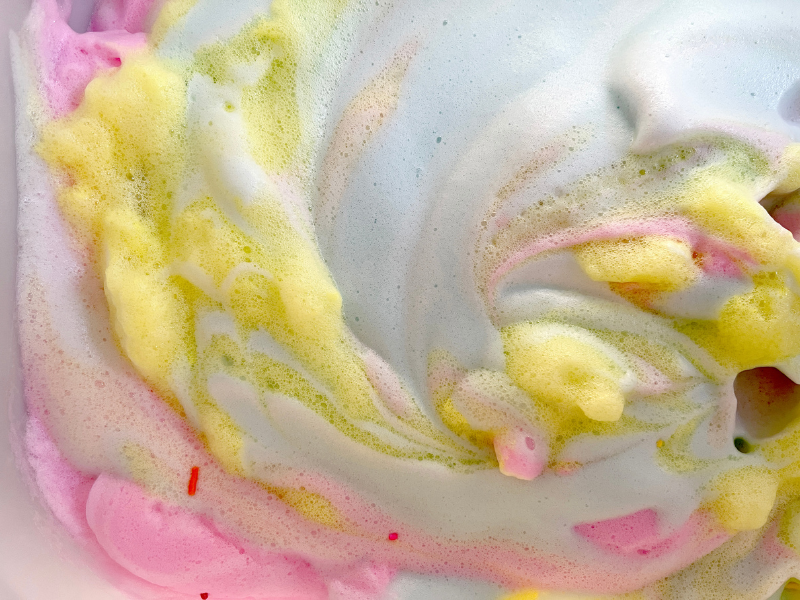
9. Bubble Foam
This sensory activity also has what it takes to become a messy play experience. For this, all you need is a bit of water and a few squirts of dish soap. Once blended together, the mixture should become nice and thick.
You can pour the soap and water mixture onto a tray and let the kids play in it. Or add a couple of drops of food coloring to turn the foam into the kids’ favorite colors so they can create some foamy sensory art.
Recipe: Bubble foam is 1 part (tear free) bubble bath to 2 parts water.
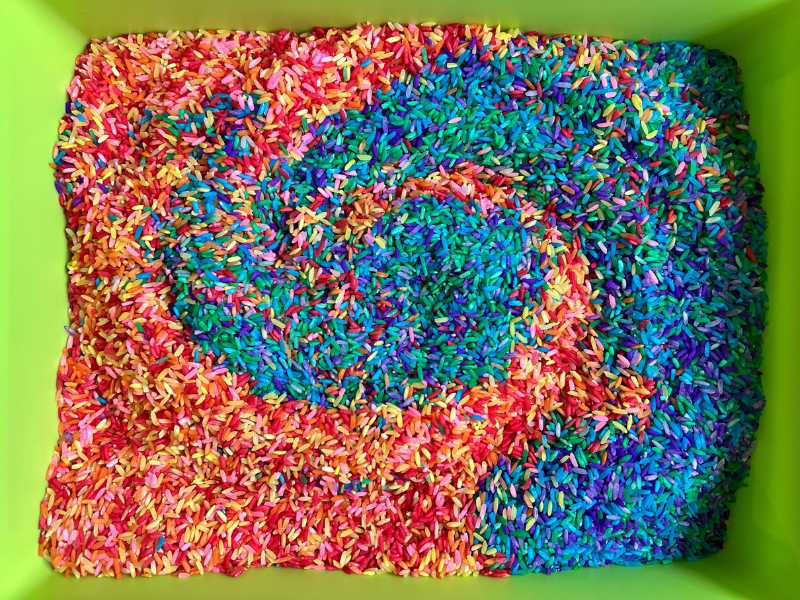
10. Rainbow Rice
Rice bins present a calming and quiet opportunity for kids to explore sensory play. Dyed rice is easy to make with a teaspoon of vinegar and a squirt of food coloring or liquid watercolors added to a bag of rice. For multiple colors, add 3 cups of rice per Ziploc. Seal and shake to incorporate color into the rice. Let dry and rice will keep indefinitely.
Add pom poms, scoops and vessels or small plastic animals or construction vehicles for kids to play with.
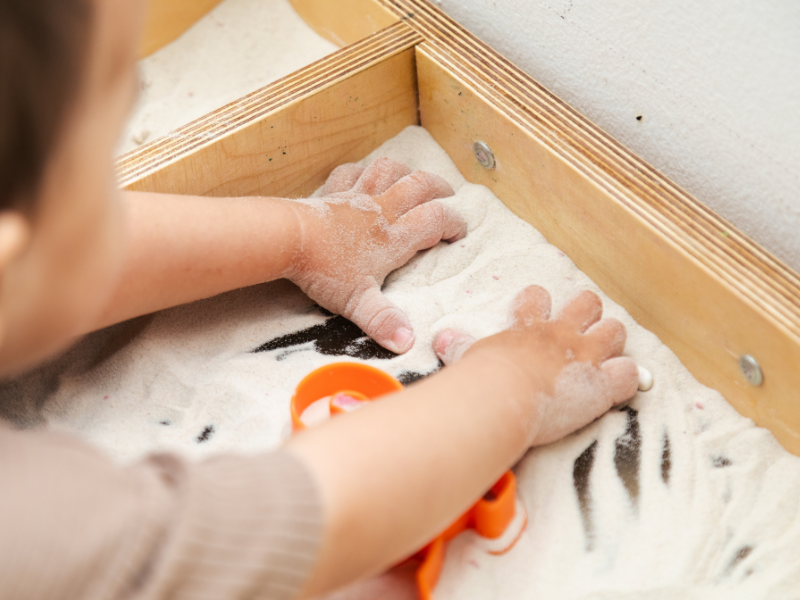
11. Sand
Sand is a wonderfully tactile material and great for all kinds of sensory play and experiences. Here are a few ideas to try:
- Here’s a DIY Zen Garden Sand Tray for indoor sand play
- And, of course, there’s the backyard sand pit
- Or the beach
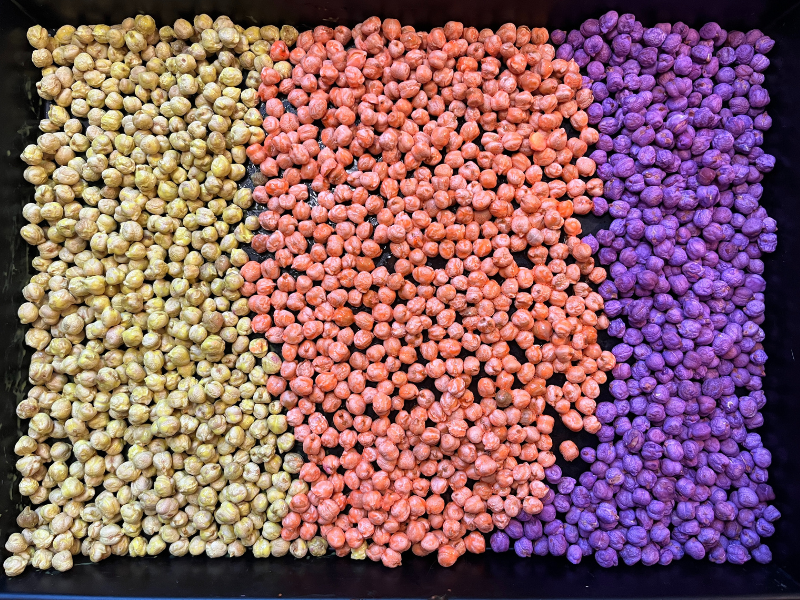
12. Dried Beans
Dried beans of any kind (chickpeas, lima beans, kidney beans, black beans, lentils, etc.) are a great filler for a sensory bin. They are fun to scoop and pour, and if you are feeling extra fancy, you can dye light colored beans just like you would rice.

13. Water beads
Water beads have long been a favorite in our house as they are soothing to touch and can be a relaxing way to start or end a day. Playing with them can help calm an upset child or soothe a high strung one.

Important Safety Note: Despite all that we love about water beads, they do pose a serious health risk if swallowed so be sure to closely supervise your child while playing with water beads.
If your child puts things in his/her mouth, we recommend exploring edible replacements for water beads such as tapioca balls or pearls.
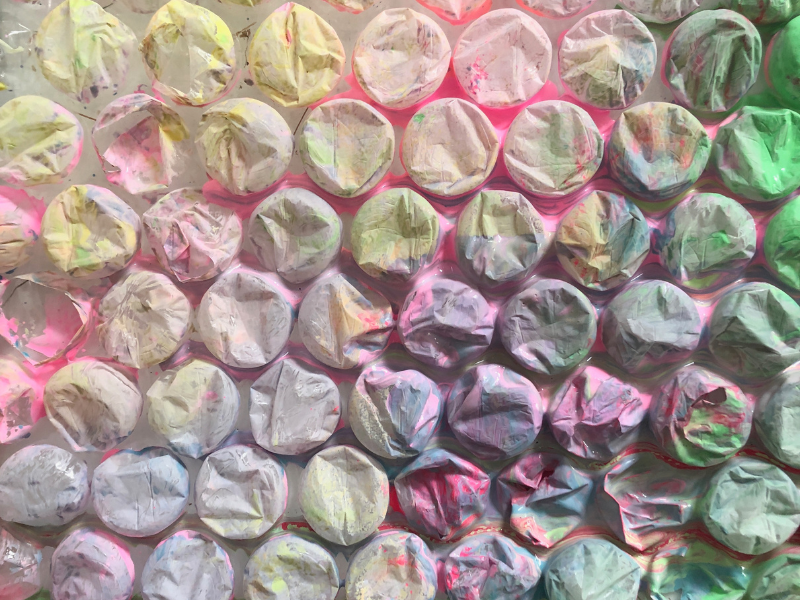
14. Bubble Wrap
Use bubble wrap from a recent package and let your toddler turn it into an art piece. Place some different colors of paint on a tray and then show your toddler or preschooler how to press the bubble wrap into each paint color.
They can then transfer the bubble wrap to paper to create beautiful artwork. Bubble wrap makes for a good sensory material because the bubbles can be squished and popped. Even babies love it!
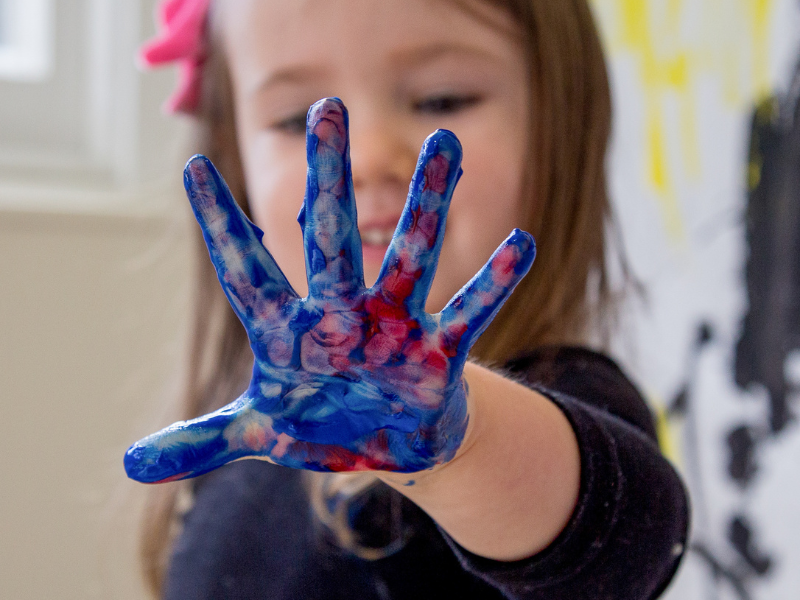
15. Finger Painting
Finger painting is one of the ultimate sensory art experiences for young children! Kids have permission to cover their hands with paint and slip, slide their fingers through gooey color.
This is the epitome of sensory art and, for young children, especially, sensory art is important for development and even helps them learn.
How about you? What are your family’s favorite sensory bin materials?
More Sensory Bin and Play Ideas
- The Artful Parent’s Guide to Sensory Play
- 7 Sensory Play Ideas for Toddlers
- How to Do a Baking Soda Experiment with Kids
- How to Make Oobleck
- How to Make Cloud Dough for Kids
- How to Make Aquafaba (A Taste-Safe Sensory Play Material for Kids)
Pin It for Later
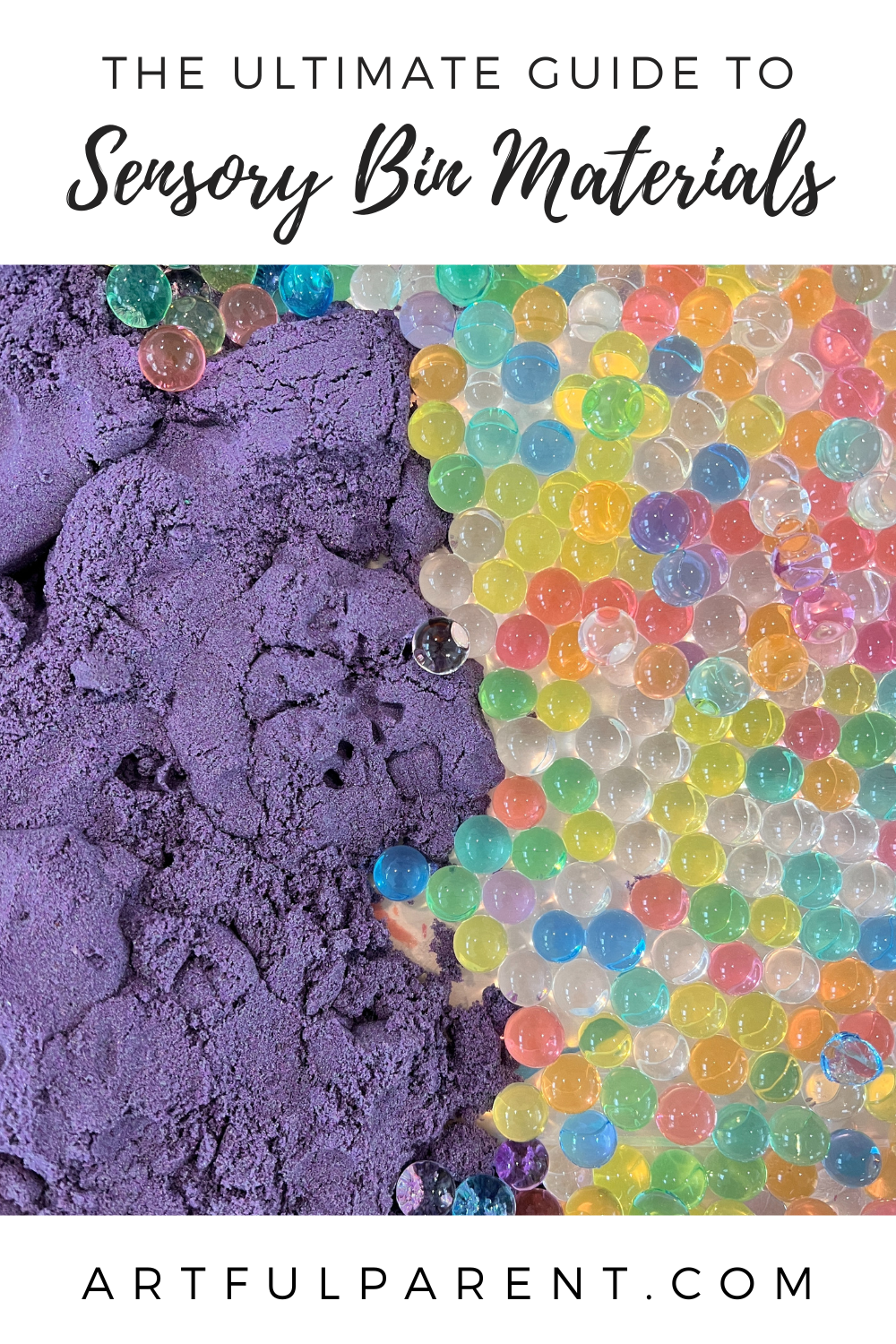
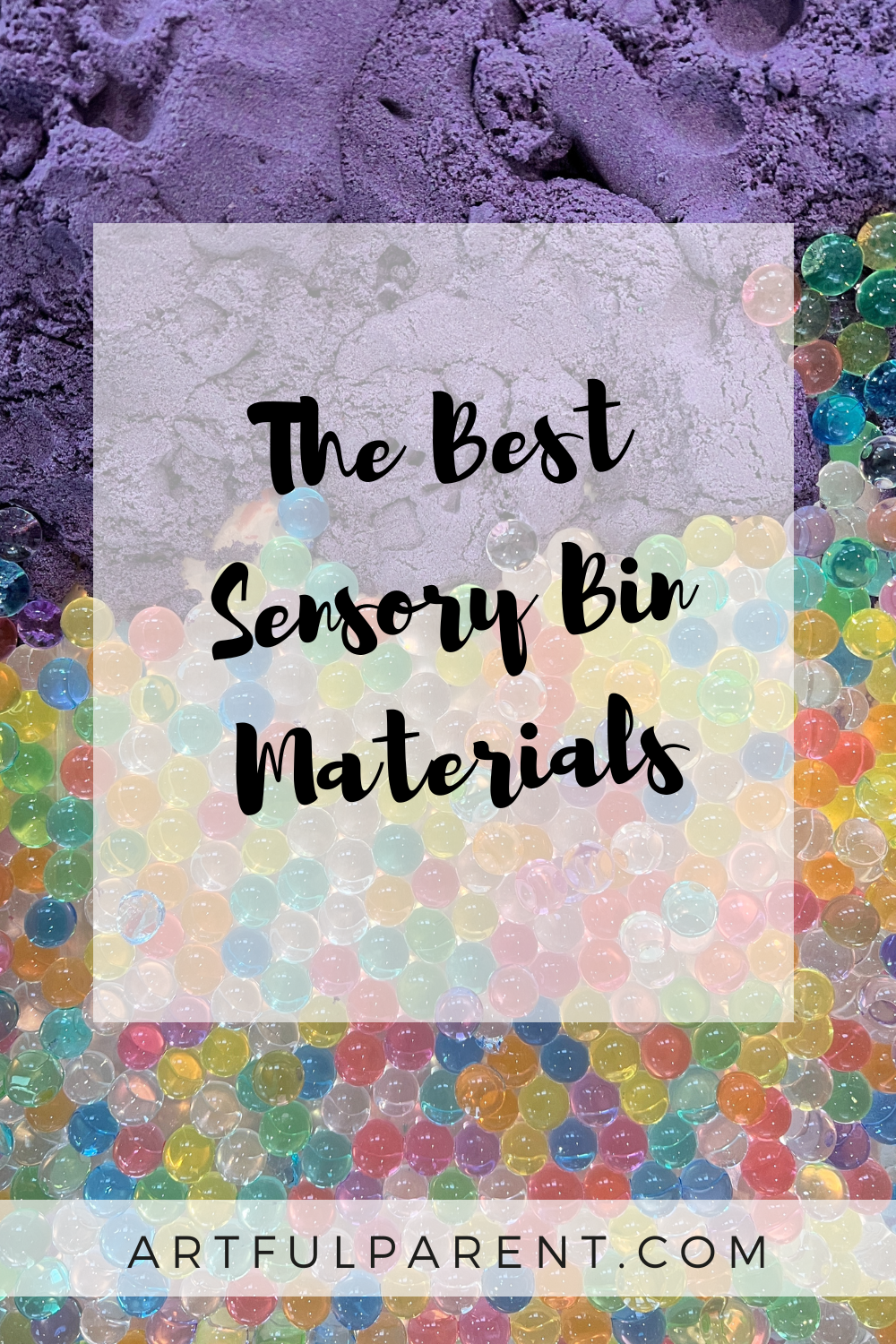

Related Posts
-
6 Baby Sensory Play Activities
Here are 6 baby sensory play activities to safely engage the youngest artists. Your baby…
-
7 Sensory Bins for Toddlers
Sensory bins for 2-year-olds encourage exploration of materials and promotes creative, imaginative play time for…
-
8 Sensory Activities to Engage Kids So You Can Make Dinner
Sensory activities for kids are encourage calm, creative play and fine-motor development. This post includes…
-
Sensory Play for Babies & Toddlers
Sensory play for babies and toddlers to fun materials through sensory play. An early introduction…
-
Shaving Cream Sensory Play Ideas for Kids
Looking for fun shaving cream sensory play ideas for your kids? Check out these awesome…
-
The Artful Parent's Guide to Sensory Play
Erin DeThomas of Makers explains what sensory play is and shares why sensory play is…


